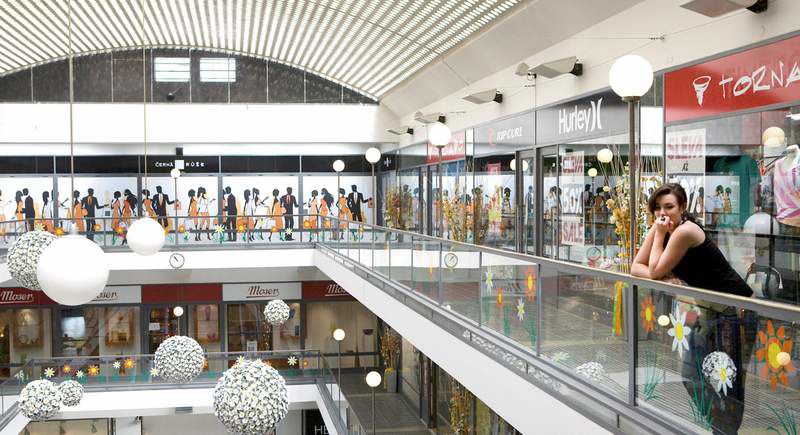Prague’s architectural gems are hidden in plain sight
Published 5:00 am Sunday, July 10, 2011

- A shopper surveys Arcade Cerna Ruze in Prague. The arcades once epitomized modern architecture.
PRAGUE — The other afternoon Adam Gebrian, a young Czech architect and critic, suggested we investigate this city’s familiar candy-box center.
I must have looked skeptical. “Wait,” Adam muttered, and we hopped a tram for Republic Square, where tourists snapped pictures of picturesque Powder Gate and ogled Municipal House, the Art Nouveau concert hall, tarted up after a restoration.
Uninterested in the obvious monuments, Adam rounded the corner and stopped instead before Kotva, a department store from the communist 1970s in brawny, Brutalist mode. Low slung and blocky, Kotva presented itself as a hulking iron-and-concrete hexagon with wraparound windows, set a little awkwardly back from the sidewalk. I pushed open the front door and stepped into a sunny, whitewashed interior, amid an orchard of orderly columns with capitals like spiky branches.
I got it: Prague’s hidden gems, in plain sight. From Kotva, Adam snaked through nearby streets, taking me in and out of a series of arcades, mostly built during the 1910s and 1920s, belated versions of the famous 19th-century proto-malls of London, Milan and Paris that once epitomized modernity. Sky-lighted pedestrian corridors, shortcuts, they wormed through whole blocks of masonry buildings and looked immaculate — all glass, marble and shiny steel, with barrel-vaulted ceilings, domed aeries and soaring atriums, knitted seamlessly into the surrounding streetscape. Rockefeller Center had nothing over them.
But they were nearly abandoned.
Several years ago an exhibition in Vienna celebrated them, and lately a few chic clubs and cafes have apparently taken over parts, though I saw almost only forlorn stores hawking discount sneakers and fast food; in lieu of the original movie palaces there were one or two local theater troupes advertising community dramas on gaudy fliers tacked to corkboard easels. Passers-by, mobbing the streets right outside, seemed not even to notice the arcades.
“Tourists find them if at all only by accident,” Adam said. Most Czech architects haven’t given these places much thought either, he added. We stood in the marbled silence of the spectacular Koruna Palace passage, steps from Wenceslas Square, where a sign promised a Middle Eastern restaurant would soon occupy one of the tall, blackened storefronts.
Slipping from the busy streets in and out of these arcades reminded me of the enchanted portals in the “Harry Potter” stories and in “The Secret Garden.”
Back at the Broadway arcade in Prague, a few Czech teenagers hung out drinking Cokes under the glass-block dome, and I imagined that once upon a time these interior streets were posh and packed with the overflowing energy of a capital city. As do great works of art, cities exist in layers that wait to be found, when we’re ready. It happens in the company of a small child, through whose eyes one suddenly picks out, instead of all the familiar shops and buildings and intersections, the flags and airplane trails and small dogs and shiny bottle caps on the sidewalk.
These shifts of perspective can be as startling as the discovery of a secret passageway or the recovery of a long lost memory. They are like the arcades of our minds.






